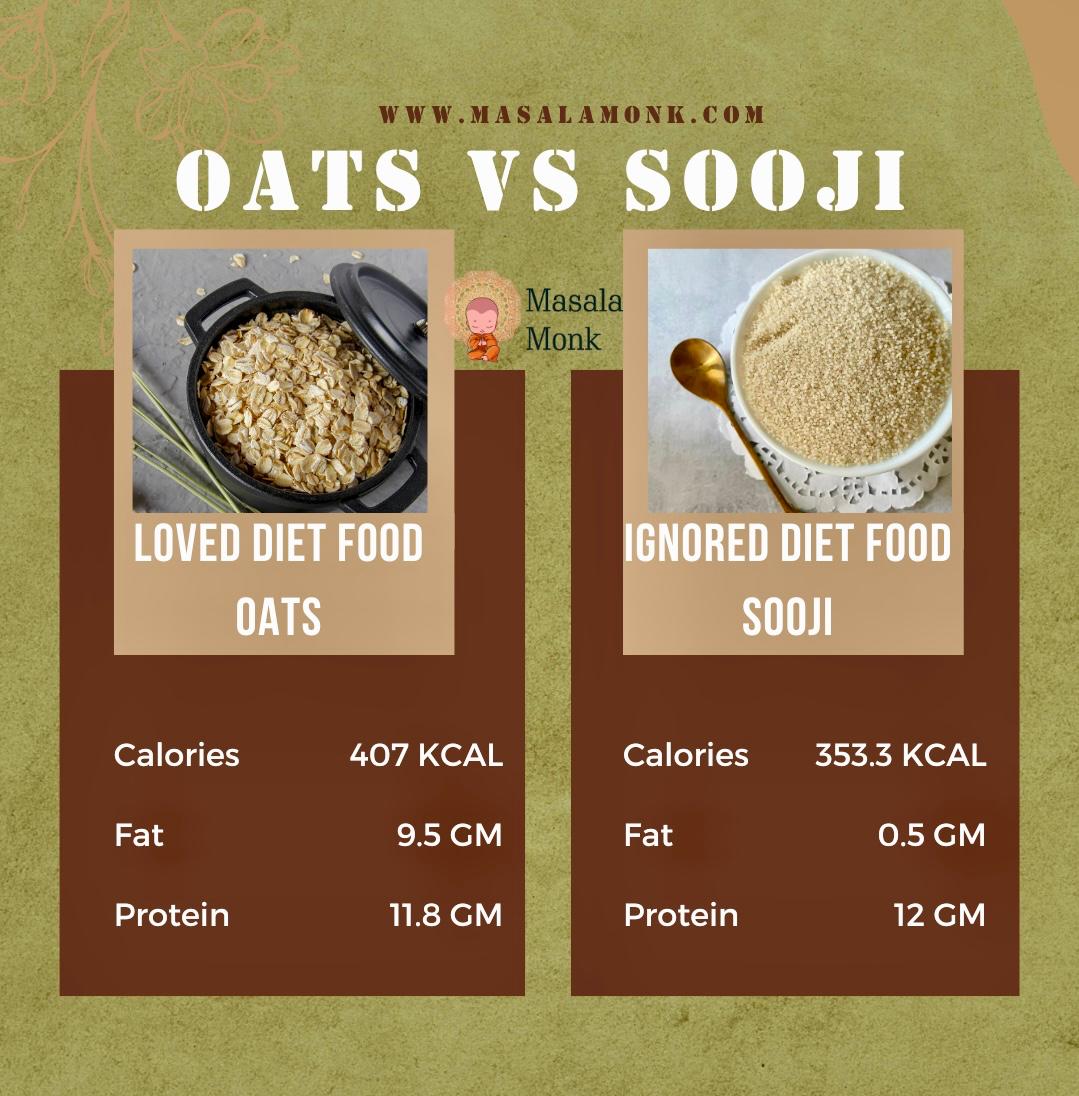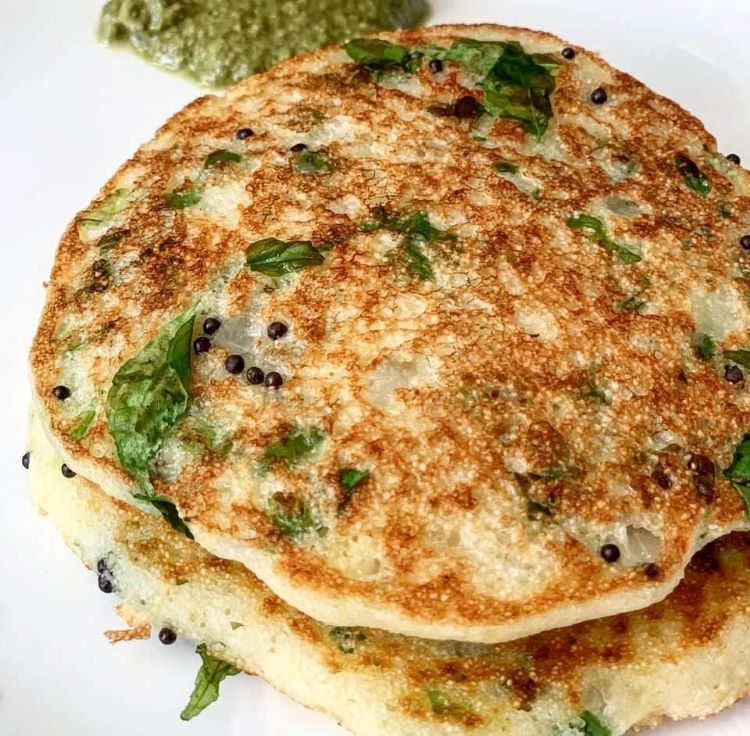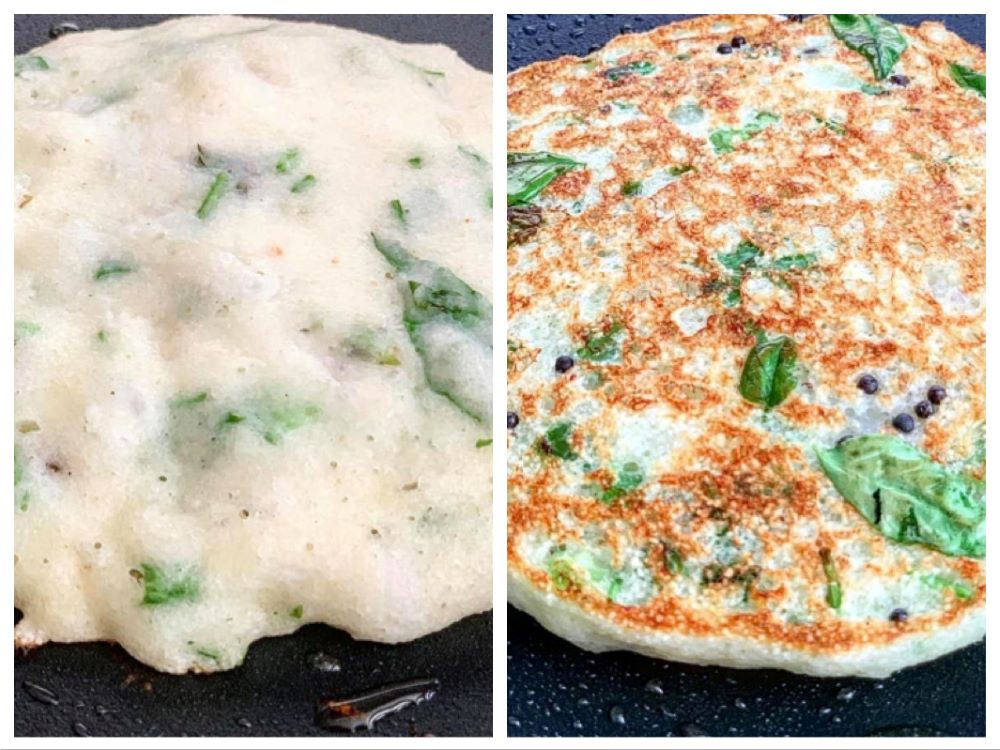
When it comes to dieting, certain foods receive all the glory, while others are often overlooked. Oats, for example, are hailed as a superfood and a staple in many diet plans. But what about suji (semolina)? This humble grain is frequently ignored, despite its impressive nutritional profile. Let’s dive into a detailed comparison between oats and suji to uncover the truth about these two diet-friendly foods.
At first glance, it’s easy to see why oats are favored in the diet community. They are a rich source of protein and healthy fats, making them an excellent option for sustained energy of course but we love to adapt western culture and often ignore our own food option. However, suji holds its own with slightly more protein per serving and significantly less fat, which might appeal to those looking to reduce their fat intake.
The Case for Oats
Oats are celebrated for their high fiber content, particularly beta-glucan, which is known to lower cholesterol levels, improve heart health, and provide lasting satiety. They are also gluten-free, making them a safe option for those with gluten sensitivities or celiac disease. The healthy fats in oats contribute to brain health and help maintain balanced energy levels throughout the day.
Oats can be incredibly versatile in a diet:
- Breakfast Porridge: A warm, filling way to start the day.
- Smoothies: Adding oats to a smoothie boosts its fiber content.
- Baking: Oats are a staple in healthy baking, from muffins to cookies. Check here some recipe using Oats, Easy and Healthy Oat Cookies, Protein Rich Pancakes Recipe
The Underrated Suji
Despite its lower profile, suji is a nutritional powerhouse in its own right. With slightly more protein than oats and a negligible fat content, suji is perfect for those aiming for a lean diet. It’s also an excellent source of selenium, an antioxidant that helps prevent cell damage, and iron, which is essential for transporting oxygen in the blood
Suji is often seen in traditional Indian dishes:
- Upma: A savory breakfast dish that’s both light and satisfying.
- Halwa: A sweet treat made with ghee and sugar, offering a comforting dessert option.
- Dosas and Idlis: Suji can be used to make these fermented South Indian staples, which are both nutritious and delicious. Check here some amazing recipe using sooji: Sooji Chilla Semolina Veggie Pancakes- Quick Healthy Breakfast Recipe
Which Should You Choose?
If you’re looking for a filling, fiber-rich option: Oats are your go-to. They help in maintaining steady blood sugar levels and keep you fuller for longer periods.
If you’re aiming for a lower-fat, high-protein diet: Suji might be the better choice. It provides essential nutrients without the additional fat content, making it a lighter option for those counting calories.
Conclusion
Both oats and suji have their unique benefits and can be part of a balanced diet. Oats are great for those needing more fiber and healthy fats, while suji offers a low-fat, high-protein alternative. Instead of choosing one over the other, why not incorporate both into your diet? Each can play a role in achieving your health and fitness goals, depending on how you use them. Remember, the best diet is one that’s varied and includes a range of nutrients from different sources.













